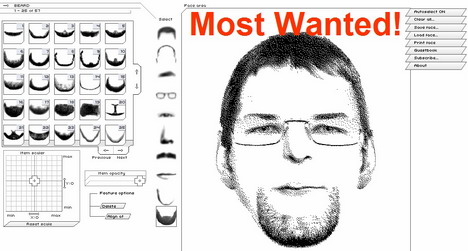Déjà vu all over again
BEA moves ahead to take the lead in the Java pack, closing in on a familiar rival using a familiar team
IT FELT LIKE we’d been this way before. Up on the stage, the CEO stepped off his motorcycle and announced a sexy new tool to revolutionize the development path to Web services. Then a tall, handsome guy on a scooter rallied the troops around the integrated suite of products — server, IDE (integrated development environment), portal, and a sleek developer site stuffed to the brim with code, tutorials, and virtual caffeine.
But the guy on the scooter wasn’t Bill Gates or Steve Ballmer. It was BEA Systems Chief Alfred Chuang at BEA e-World in San Diego announcing Weblogic Workshop (formerly known as Cajun). The guy on the scooter was Tod Nielsen, who used to perform exactly the same services for Microsoft right up to two weeks before the Forum 2000 launch of .Net. Now he and BEA vice president of engineering Adam Bosworth and their Band of Merry Men are emerging from Sherwood Forest to steal from the rich and give to the poor.
Nielsen says it’s not Microsoft vs. BEA, but maybe it is. “Look at the team we’ve got: Adam, all the CrossGain guys, these Westside guys, which not a lot of people have talked about,” he says. “Many of them are former softies that have worked together. We’ve got hundreds of man-years of experience understanding these application developers like nobody else. Microsoft clearly has a bunch of experience in that space. It’s us and nobody else.”
Both Nielsen and Bosworth are quick to point out that BEA is looking to move to the top among Java vendors, not taking Microsoft on directly. “My main thrust is to increase the number of people who can use Java to build applications by an order of magnitude,” Bosworth says.
Bosworth jump-started Microsoft along the road to .Net in February 1998 by doing something counter-intuitive to the Redmond culture. “I walked up to a bunch of competitors and said, ‘We need a bigger pie. Then we can go argue about slices.’ ” After Oracle and IBM started their XML efforts, Bosworth used the momentum to achieve the requisite buy-in from Gates.
Now Bosworth is using a version of the same strategy on his J2EE (Java 2 Enterprise Edition) brethren — with one significant difference: “In this case, BEA is fully behind me. I don’t have to pressure BEA. BEA is the most signed-up. But I’ve got to say, so are some of the other players in the JSR [Java Specification Request] community [of the Java Community Process].
“I was in a JSR meeting the other day, and other companies like the one I came from [Microsoft] would have definitely regarded this as proprietary IP to be jealously protected at all costs,” Bosworth says. “We not only had told all the other people in the JSR how we were doing it, but we’d given source to some of them so they could get on the same page.”
Bosworth laughs, “Right now I’m reveling in being in an environment where it’s sort of the opposite. I’m not trying to lock the IP. I’m trying to help, with a whole lot of other people, to push the Java model forward.”
Bosworth has been here before, on the other side of the argument from Microsoft Windows Chief Jim Allchin and other keepers of the Windows flame. Hasn’t Allchin been right about protecting the crown jewels? You can’t give the user interface (the browser) away for free and still get people to upgrade the OS, the argument goes.
“I wonder if Allchin was right?” Bosworth says. “Let’s take a simple example — DHTML and Trident [the browser-based editing tool]. Jean Paoli and Scott Isaacs and a bunch of people were sent by us to go work with Tim Berners-Lee and all those guys on making this a standard. If Microsoft had run really fast aggressively to leverage that at the time that they did, they wouldn’t just have a browser, they’d have a complete application development environment around it.
“But you’re right about Allchin,” Bosworth continues. “The concern was the amount of lock-in. You wanted lock-in. You wanted thick client and a complex proprietary API set. HTML didn’t meet that bill. Trident made it easier to build richer, better apps, but it didn’t meet that bill. Therefore, ‘It was a bad thing’ was the logic of the time. My point was that they were wrong.”
Bosworth gives another example: Active Server Pages. Because they promoted a thin client and didn’t encourage COM and DCOM, they were not supported in 1997. “Five years later, they’ve finally rolled out ASP.Net. I would argue if the company had bet on it more aggressively, they’d have been exactly where they are today a year or two earlier,” Bosworth says.
What about the recent rumblings about Microsoft’s HailStorm? Two weeks ago Allchin told reporters that he’s concerned about the viability of HailStorm’s business model, questioning the wisdom of having architects such as Mark Lucovsky innovating without regard for how to market the product. Then, last week comes an announcement of a HailStorm-like, Great Plains small-business offering. Is Microsoft about to shoot itself in the head again?
“I hope so. I love Lucovsky,” grins Bosworth. “I’ll go offer him a job. Lucovsky’s a great engineer. What I do know is I talk to other companies like telcos that view [HailStorm] as a threat. And ultimately if you turn every one of your potential customers into someone that is threatened, it’s usually not good business.”
By contrast, Bosworth says he’s having fun playing nice with everybody. “If I make the whole J2EE market 10 times bigger, that will be very good for BEA as well.” Does BEA have the money to pull this off? “When I joined Microsoft it was the same size as BEA is — same number of people, same sales, and in the same position. It had DOS, and DOS was under some threat.”




